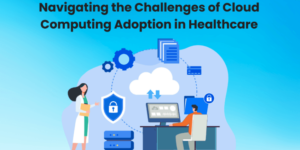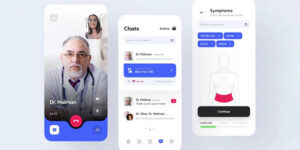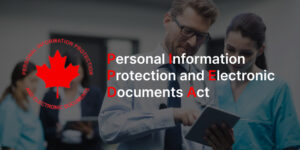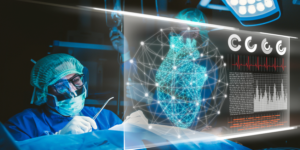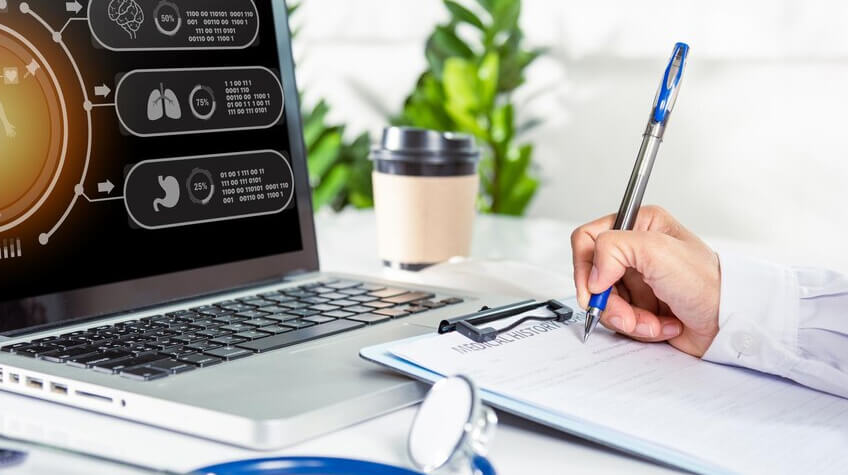
Navigating the complex and changing terrain of the healthcare sector may be difficult. The most recent medical innovations, procedures, and regulatory requirements must be understood by healthcare organizations and experts. In this context, learning management systems (LMS) are essential tools. All members of the workforce, including healthcare practitioners and support staff, may learn more effectively by using best practices of LMS in healthcare.
Introduction
On this tour, we’ll look at how compliance, continuing education, and training are being revolutionized by the LMS’s accessible and user-friendly design. Thanks to its easy-to-navigate layout, learning has never been more convenient or engaging.
Remember those college days when you’d sit through endless lectures? Now imagine getting all that knowledge without leaving your comfy couch or even taking off your pajamas! That’s what an LMS can do – break down complex subjects into bite-sized lessons. Moreover, the real charm of an LMS comes from its versatility.
This necessitates the creation of an effective training environment and the prompt onboarding of newly hired healthcare workers.
Best Practices of LMS in Healthcare Industry
Regardless of whether you’re a healthcare professional aiming to improve your abilities or a healthcare institution attempting to streamline your training processes, this article will arm you with the information required to make the most of LMS in the healthcare industry.
➥ Streamlining On-boarding and Training
To make sure that new recruits are properly trained and that existing personnel are always up-to-date on the most recent procedures and regulations, the healthcare sector must streamline onboarding and training. With the help of Learning Management Systems (LMS), healthcare organizations can achieve this efficiently.
Smooth and effective onboarding is the foundation of a successful healthcare team. Incorporating e-learning modules for compliance and regulatory training, systematic onboarding checklists, thorough orientation materials for new recruits, and other best practices may all be implemented by organizations using LMS.
Employers may guarantee that new workers quickly adapt to the healthcare business, creating a sense of community and enhancing production, by automating the onboarding process using an LMS.
➥ Continuous Learning and Professional Development
In the healthcare sector, where information is always changing and providing the best possible care for patients depends on remaining up to date, continuous learning and professional development are essential components. In order to support continuing medical education and promote a culture of lifelong learning among healthcare workers, learning management systems (LMS) are essential.
➥ The Role of LMS in Ongoing Medical Education
Healthcare workers can continue their education on a flexible platform thanks to LMS. Healthcare workers can access the most recent advancements in their industry at their own speed because of the library of up-to-date medical literature, e-learning courses, and webinars it offers.
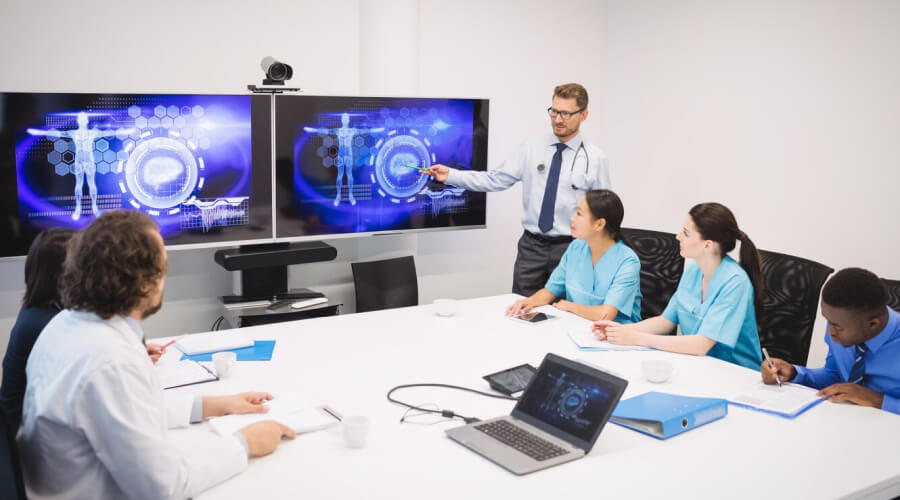
Whether it’s a nurse enhancing their skills or a doctor staying updated on the latest treatment options, LMS is the bridge to lifelong learning. Professionals can take self-paced courses, obtain certifications, and get current information on new medical trends thanks to it.
➥ Creating a Culture of Lifelong Learning
It is crucial to promote a culture of lifelong learning in the quickly developing field of healthcare, LMS supports this culture by giving healthcare organizations the tools they need to create learning programs, monitor results, and encourage continued education.
Through gratification, interactive forums, and peer-to-peer knowledge sharing, healthcare personnel are encouraged to adopt a continuous improvement mindset. Improved patient outcomes, greater levels of patient satisfaction, and a more adaptable and durable staff in the medical industry are all advantages for the individual.
➥Compliance Regulatory Challenges in Healthcare
Healthcare professionals must navigate a tangle of rules, regulations, and procedures in order to remain compliant. The difficulties range from maintaining FDA requirements for medicines and equipment to honoring HIPAA rules for the protection of patient data.
It can be difficult for healthcare personnel to keep up with the most recent compliance regulations while carrying out their core duties because of the tight schedules they must juggle. Compliance is crucial since a mistake can have significant repercussions.
➥ How LMS Simplifies Compliance Training
LMS provides a streamlined approach to tackling compliance challenges, it offers a central platform for healthcare organizations to create, deliver, and track compliance training modules These courses may be altered to fulfill certain legal specifications, ensuring that healthcare workers get the precise training they want.
Additionally, the LMS makes it simple to manage and report compliance efforts by enabling the scheduling of periodic compliance training, sending reminders, and logging completion information.
With the ability to access training materials online, healthcare workers can conveniently complete compliance training at their own pace, reducing disruption to patient care.
➥ Staying Current: Regulatory Updates and LMS
Regulations in healthcare are not static; they constantly evolve to address new challenges and discoveries.
LMS provides a mechanism to keep healthcare organizations updated with regulatory changes, it enables organizations to promptly update training materials to reflect the latest compliance standards and ensure that all staff members are informed about and trained in these updates. This proactive strategy lessens the possibility of non-compliance while ensuring adherence.
Healthcare organizations may dramatically lessen the burden on their staff, increase responsibility, and maintain resilience in the face of shifting legislation by using an LMS to solve compliance challenges.
Delivering safe and effective patient care while maintaining compliance in this continuously changing regulatory environment is made possible with LMS.
➥ User-Friendly LMS Implementation
It is essential to integrate learning management systems in a user-friendly manner in order to maximize their benefits in the healthcare industry. Due to the demanding nature of their jobs, healthcare professionals need an LMS that is simple to use in order for them to accept it and use it.
➥ Choosing the Right LMS for Your Healthcare Organization
Selecting the most suitable healthcare LMS software is the foundation of user-friendly implementation. It’s important to take into account elements like user interface, accessibility, and integration options while selecting an LMS.
An LMS that caters to the particular needs of the healthcare business, has an intuitive dashboard and permits mobile access may substantially enhance user-friendliness. To facilitate a seamless transition for both staff and patients, it should also easily interact with current healthcare systems.
➥ Training Staff to Use LMS Effectively
Introducing an LMS to healthcare staff is only effective if they know how to use it efficiently, proper training is key to user-friendly implementation. This calls for the creation of specialized training materials, interactive workshops, the distribution of resources that are readily understood, and the provision of user manuals.
Addressing employee concerns and answering their questions promptly is essential. Healthcare professionals may become skilled users with continuous training and gradual modification, boosting their comfort and confidence.
Also Read: Importance of UX in Healthcare Technology & Why It Matters
Conclusion
Alright, so here’s the bottom line. If we want to make Learning Management Systems work in healthcare, it has got to be easy for people to use at every step of the way.
We’ve got to keep things simple but effective across all levels; that’s how we can ensure everyone gets trained properly without any unnecessary headaches along the way. Look, if you want folks to really get into using the healthcare LMS software and actually benefit from it, you have to make sure it’s user-friendly.
It’s not just about picking some high-tech program; it needs to meet the specific needs of the sector. And that doesn’t stop at selection – training has to be comprehensive, and any common issues need proactive solutions. Only then will we see a real increase in uptake and engagement.

